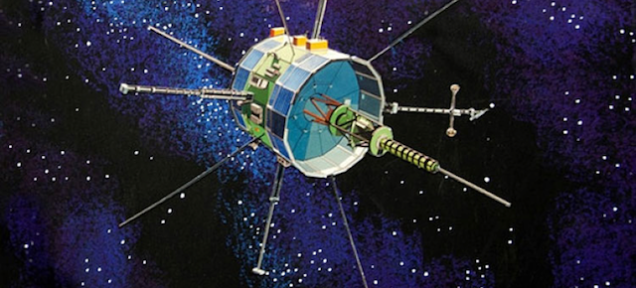Someone throw together an IndieGoGo for a 21-gun salute. The crowdfunded project take control of ISEE-3, NASA’s 30-year-old satellite, is kaput. The sad news is a blow to anyone who loves space, science or stories of redemption by scrappy underdogs.
If you’re just joining us, here’s the backstory: ISEE-3 was a satellite launched in 1978, designed to study the Sun and the Earth. It went dark after its many missions were finished, in 1997. But ISEE-3 kept right on flying — and NASA didn’t even realise it. Cut to a few years ago, when it realised she was still out there, sending communication signals that fell on deaf ears. Though NASA didn’t have the funds to reestablish contact and start using the satellite again. So a group of resourceful scientists, space writers, and fans started a crowdfunding project to do it themselves, ultimately raising $US160,000 to fund the project.
In May, they saw success, officially reestablishing contact with the little satellite, and we celebrated. But the bad news came yesterday, as SpaceNews reported that ISEE-3’s propulsions system had failed after a final, third attempt:
“There was no burn and we detected no acceleration and nothing was coming out of the engines,” NASAWatch.com Editor Keith Cowing, who spearheaded the ISEE-3 Reboot Project along with entrepreneur Dennis Wingo, said in a July 9 phone interview.
“We really can’t do anything,” Cowing said.
Meanwhile, NPR has an in-depth explainer of what went wrong:
Their troubleshooting suggests that nitrogen tanks that are needed to pressurize the fuel either aren’t working or are empty, Cowing says. “So, in essence, we can’t really fire the engines anymore.”
The earlier engine firings may merely have burned fuel that was already in the fuel lines, says Cowing. If the nitrogen tanks won’t work, then the team can’t get more fuel into those lines. That means they won’t be able to do a course correction that would let the spacecraft be recaptured into an orbit that would enable it, once again, to do useful science.
Even though it seems as though their audacious plan has failed, it’s still pretty incredible that this project happened at all — against all odds, from any angle. Now, ISEE-3 will pass by the Earth (when we’ll still be able to chat with it) and then careen off again. Goodbye, little buddy. [Space News]
